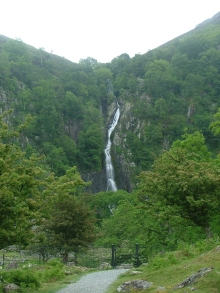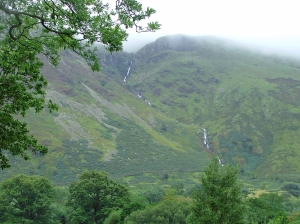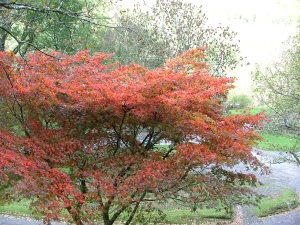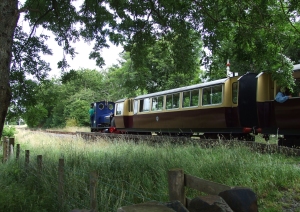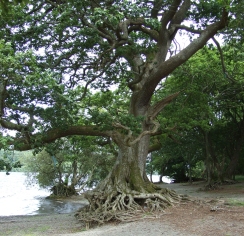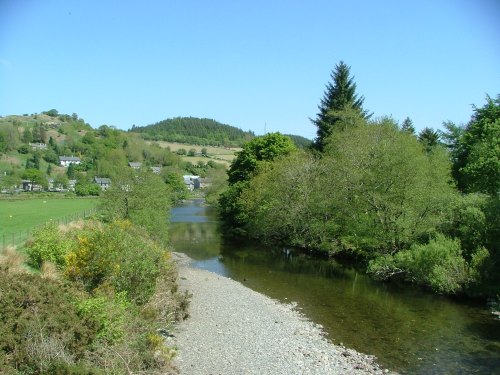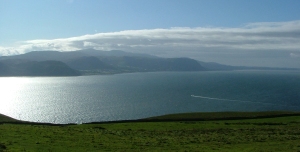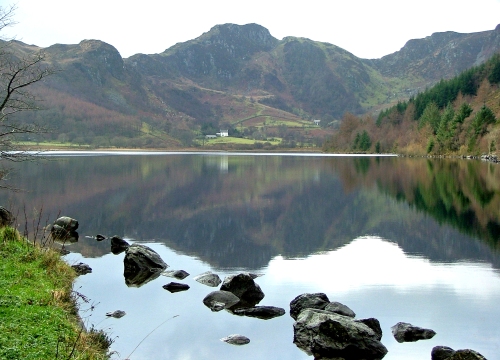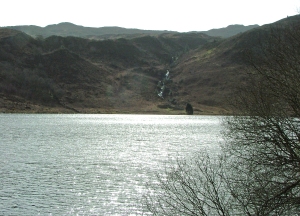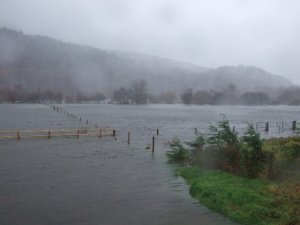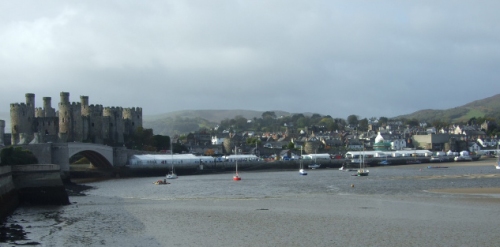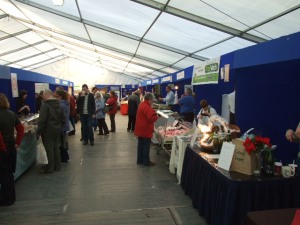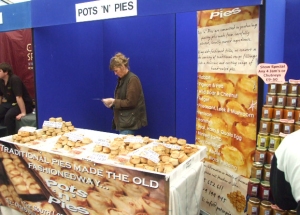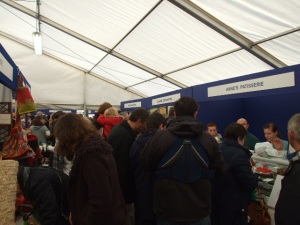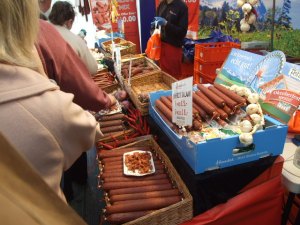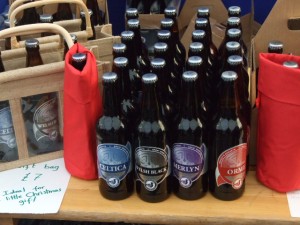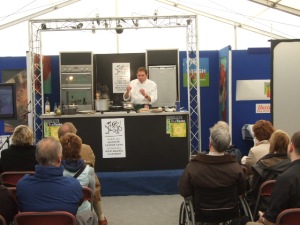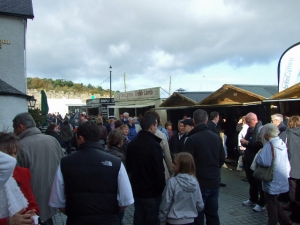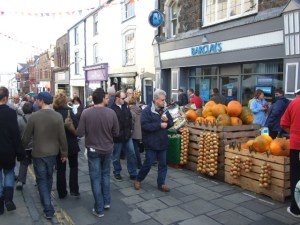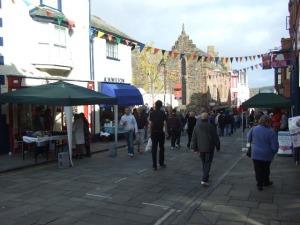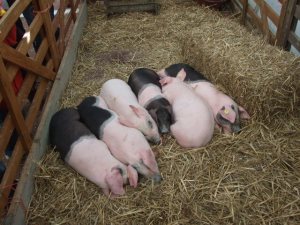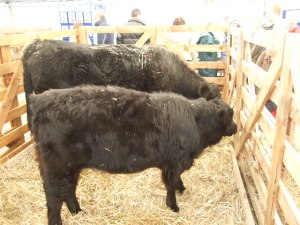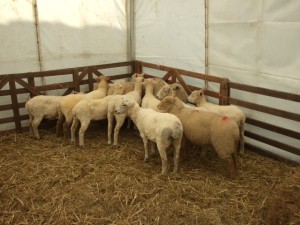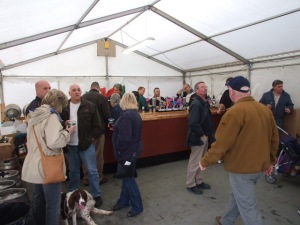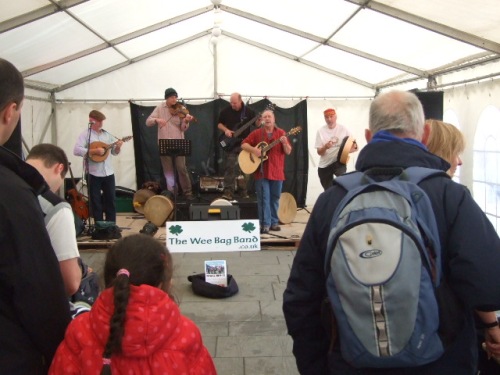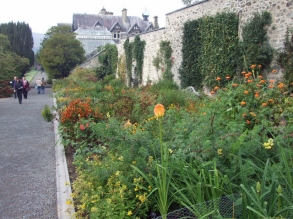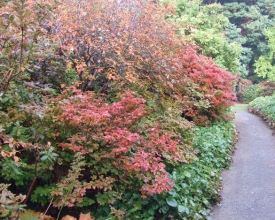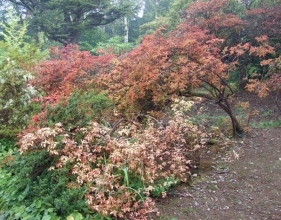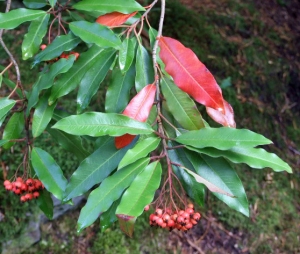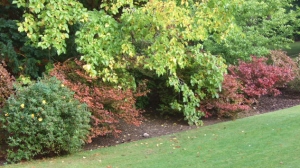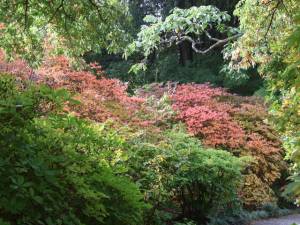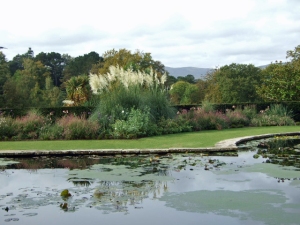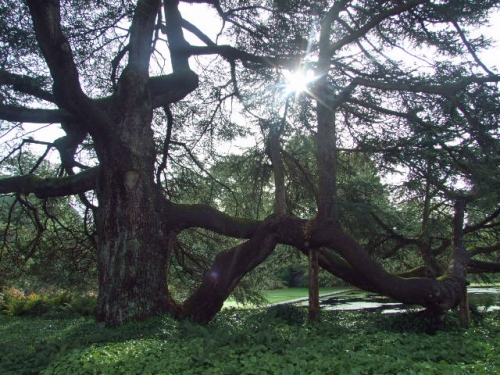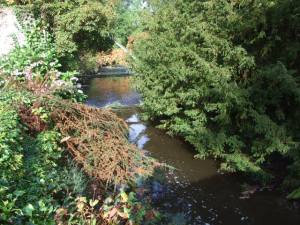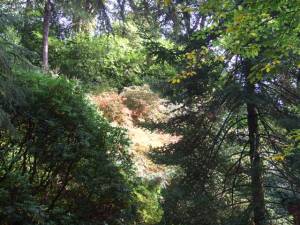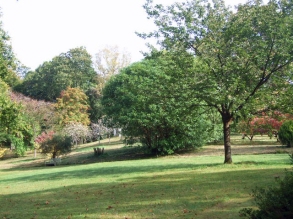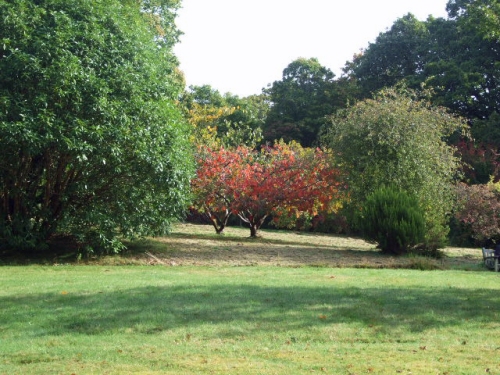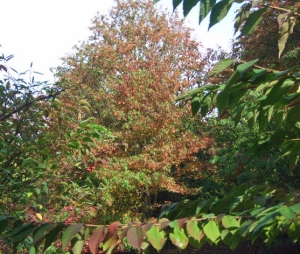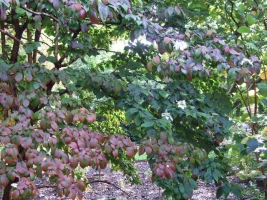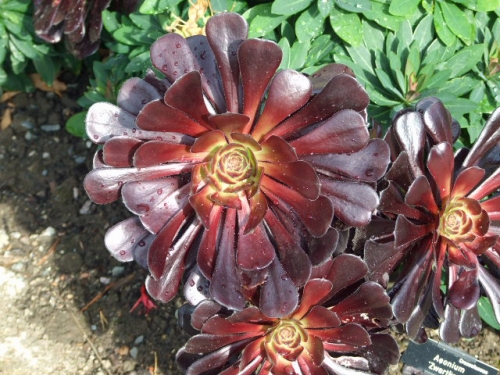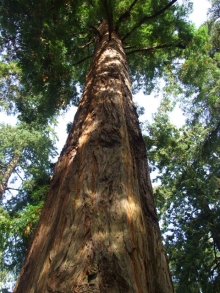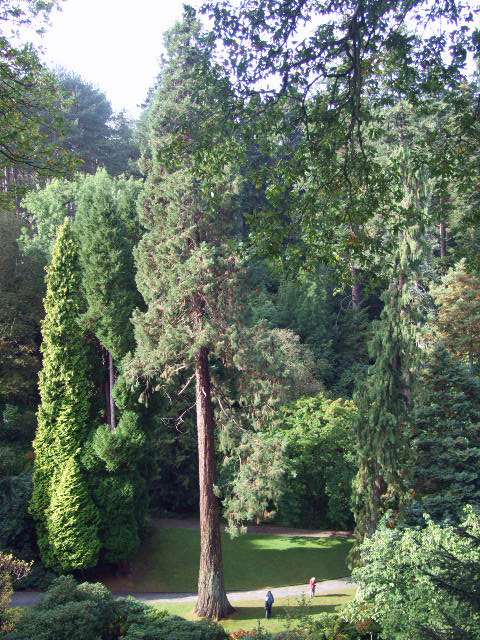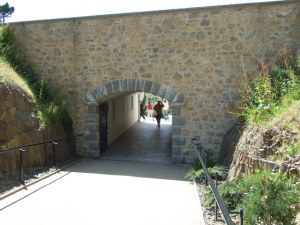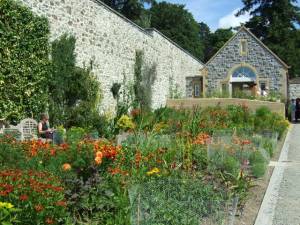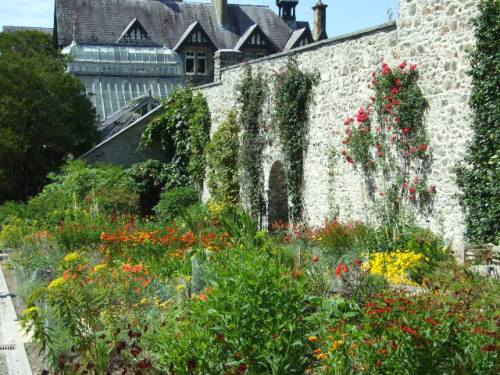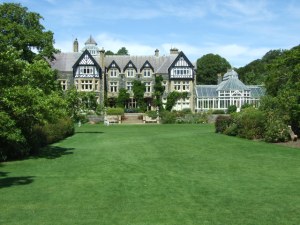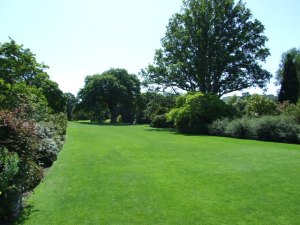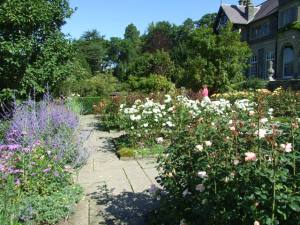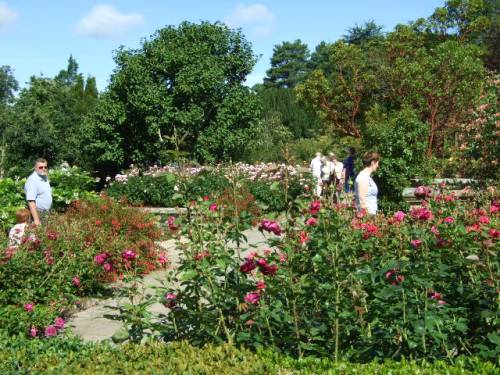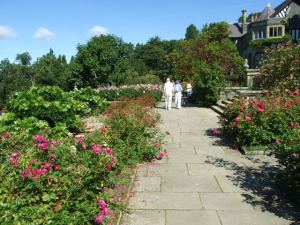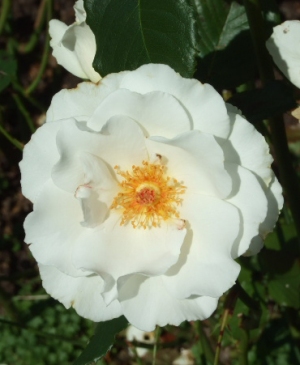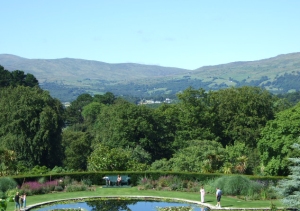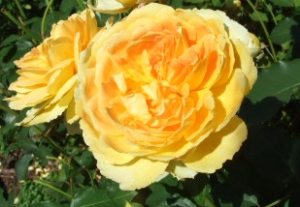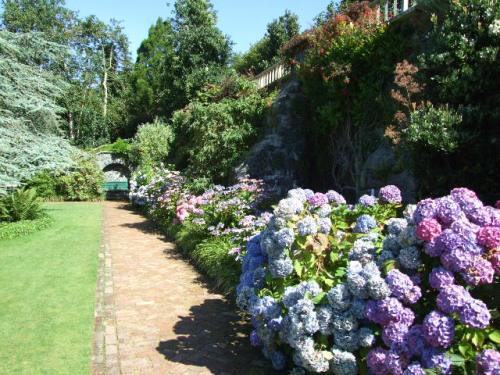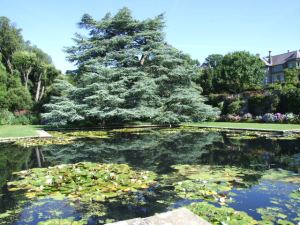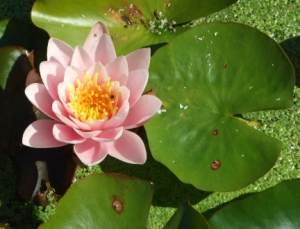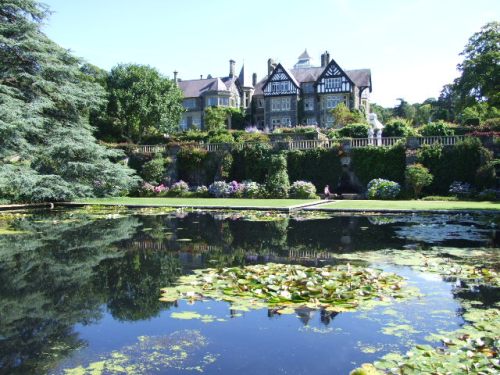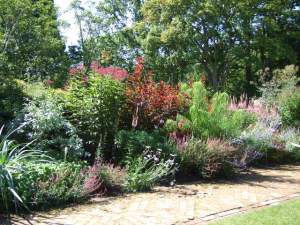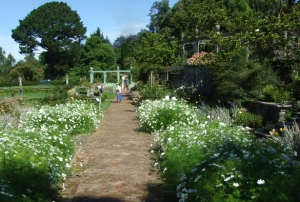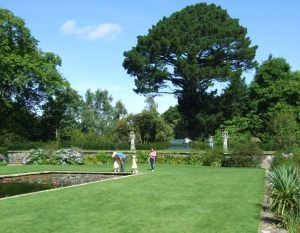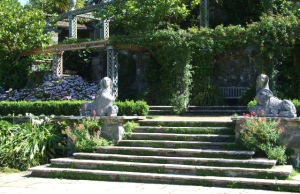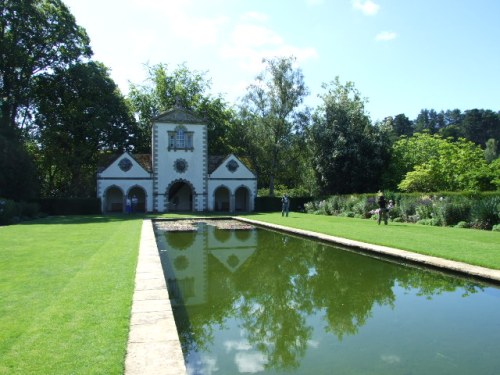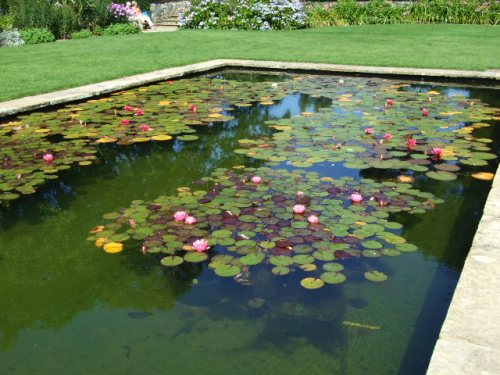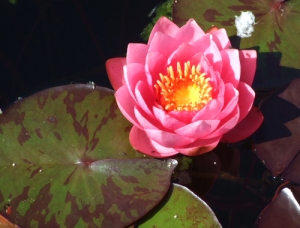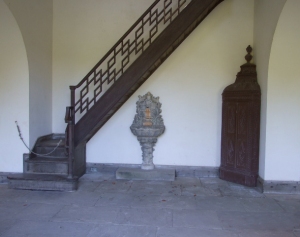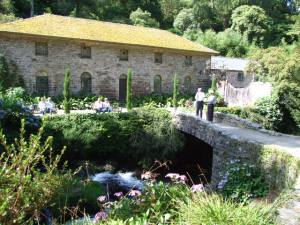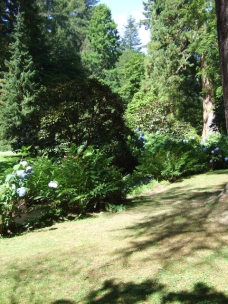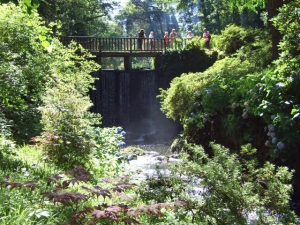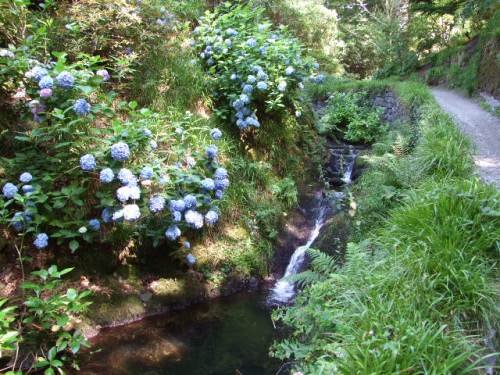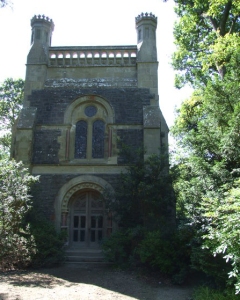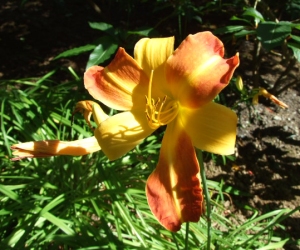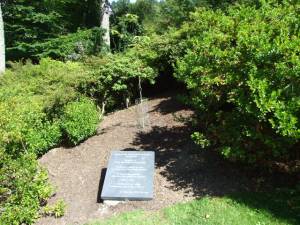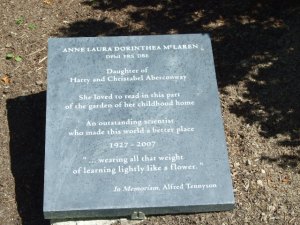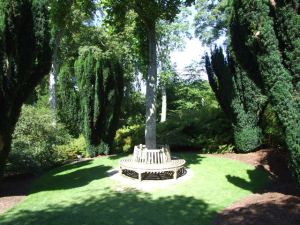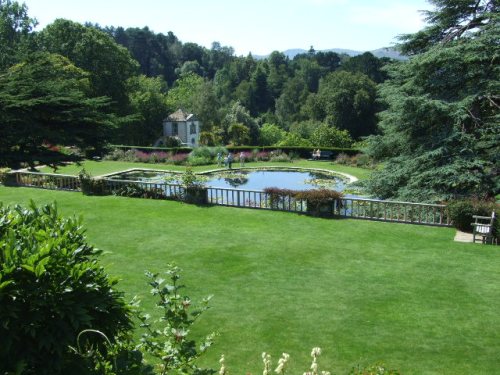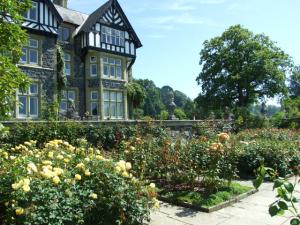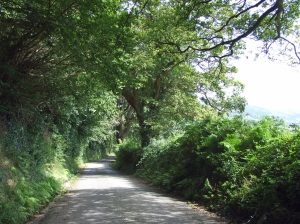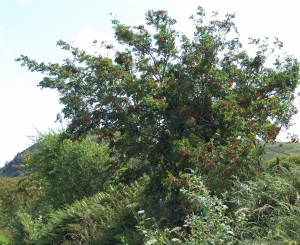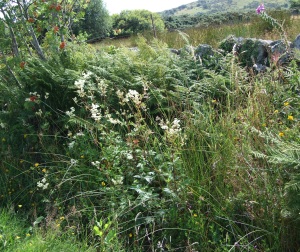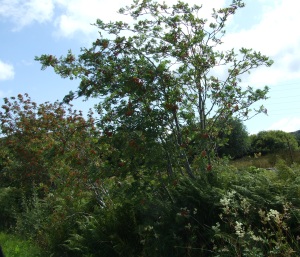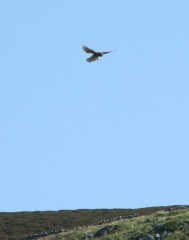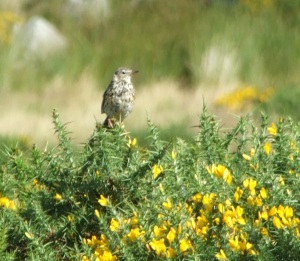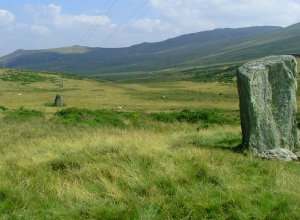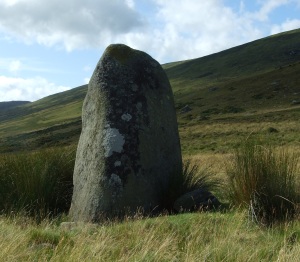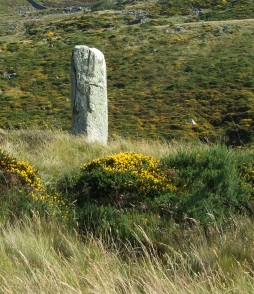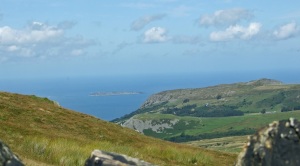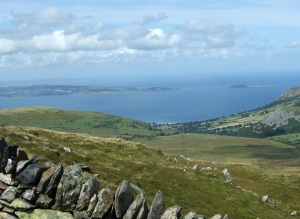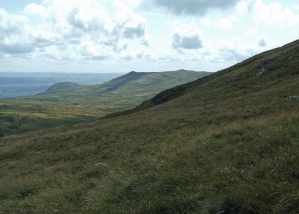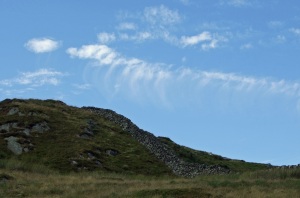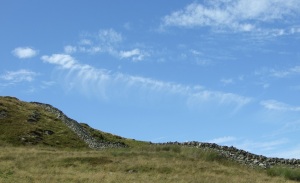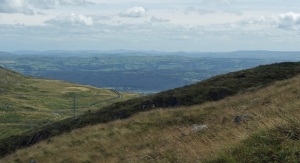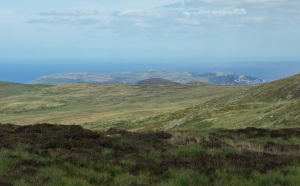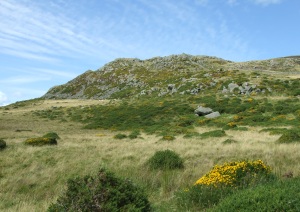Saturday 25th. August dawned bright, with mist hanging over Afon Conwy. The sun quickly burned off the mist and I set off a few miles up the valley to Llanrwst where my days walk was to start.
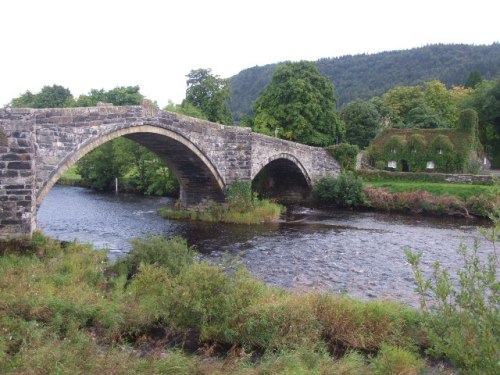
Y Pont Fawr and Tu Hwnt i'r Bont at Llanrwst, 22 Aug 09.
The bridge across Afon Conwy (Y Bont Fawr) was built in 1636, reputedly by Inigi Jones. The building at the western end of the bridge is Tu Hwnt i’r Bont (beyond the bridge). This cottage was built in 1480 and for a time served as a courthouse for the town. It is now a tea room owned by the National trust.
My walk started just across the road from Tu Hwnt i’r Bont and the first half mile or so took me along the banks of Afon Conwy.
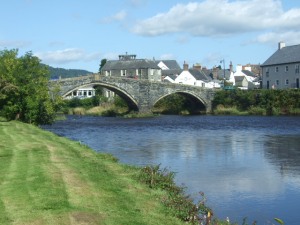
Looking back to Y Bont Fawr and Llanrwst, 22 Aug 09.

Afon Conwy looking towards Betws y Coed, 22 Aug 09.
After a short walk alongside the river I cut across the fields towards the forest.
Gwydyr forest is on the eastern flank of the Snowdonia National Park. It covers an area of about 17, 915 acres (28 square miles) and has lots of paths, mountain bike trails and horse ridind tracks.
The first mile or so into the forest was pretty steep as the path climbed up away from the valley, but there is a viewpoint part way up where you can sit at a picnic table and have a rest and a drink (and very welcome it was too).

Looking down the Conwy valley from the viewpoint, 22 Aug 09.
After a short rest it was back to the climb. More gradual now as I took the main forest track which is much used by mountain bikers.
This wasn’t the path I’d intended to take, but just before I reached the top of the hill I came across Caerdroia. This is a community project carried out by people who live in and around the forest. As it happens they were holding an open day and I was able to get a welcome cup of coffee and a sit down, all for the princely sum of 50p.

One of the sculptures in the labrynth, 22 Aug 09.
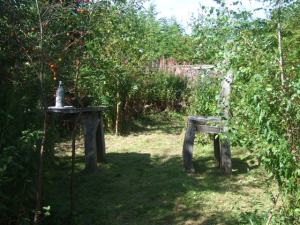
A giants table and chair in the labrynth, 22 Aug 09.
As you walk around the labrynth you are met by sculptures and strange objects. Today there were story-tellers and lots of other things going on. I wish I could have stayed longer, but I still had a long walk ahead of me. More information about the project can be found here; http://www.golygfagwydyr.org/achievements.php?page=2〈=e
Now though I had to carry on, up the last short part of the climb. I was now heading for Llyn Parc and soon got my first glimpse of the lake hidden deep in the forest valley.
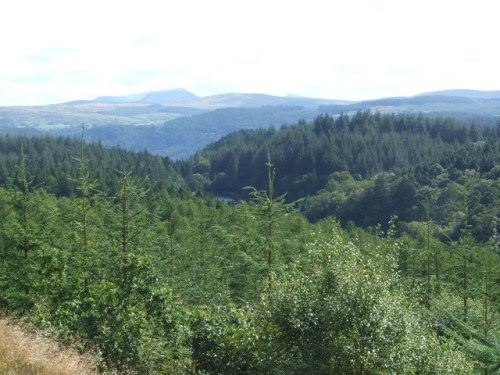
Llyn Parc hidden in a deep forest valley, 22 Aug 09.
Llyn Parc is a natural lake, but the southern end was dammed to raise the level for use of a nearby lead mine. The lake lies 664 feet above sea level and covers an area of 22 acres. It’s a long, narrow lake, lying in a “V” shaped valley.
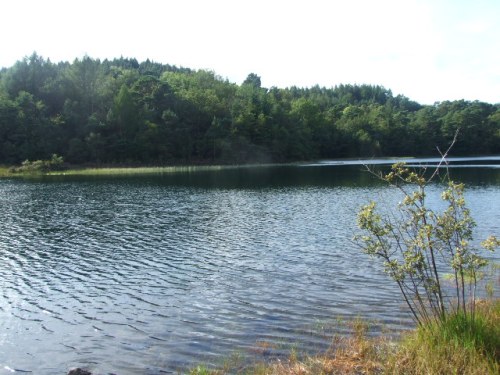
Llyn Parc, 22 Aug 09
After a walk along the shore of the lake I followed the stream at the southern end for a short way. This is the outflow which was used by the lead mine, and there are still relics of the mines around the area.

Relics of mines can be seen all over the area, 22 Aug 09.
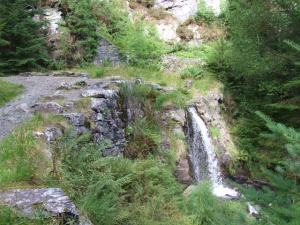
Remains of lead mine beside the waterfall, 22 Aug 09.
Now I walked along the shore of Llyn Parc, then it was back to climbing up away from the northern end and heading for another small lake and some more ruined mines. Walking along the forest tracks there were signs that autumn is not far away.
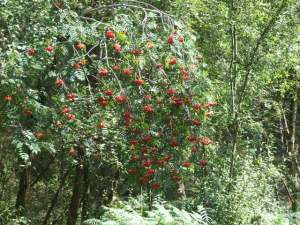
Lots of bright red Rowan berries, 22 Aug 09.

Leaves are already starting to change colour, 22 Aug 09.
As well as the signs of autumn though, there were also some colourful edges to the forest.
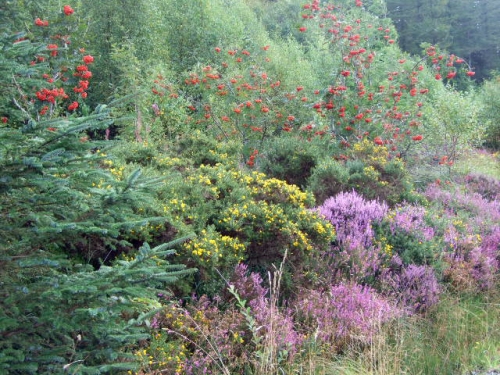
Colour at the forest edge, 22 Aug 09.
After a climb and walking around the hillside I then got some great views.

The view of Moel Siabod and the Snowdon range, 22 Aug 09.
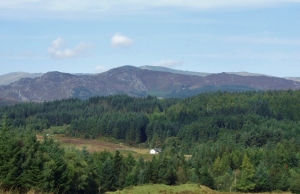
The view across the forest towards Llyn Crafnant, 22 Aug 09.
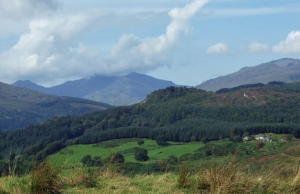
Cloud over the Snowdon horseshoe, 22 Aug 09.
Now I was almost at Llyn Sarnau. This is a small shallow lake with reeds growing along a lot of it. It’s one of the smaller lakes in the area, covering only 3 acres. As I approached it there were dozens of buuterflies flitting around the edge of the forest. Unfortunately they don’y like to stop and pose for photos, so I only managed to catch a quick shot of one. I regret to say that I’m not really up on butterflies so I won’t even try to name this one.

Llyn Sarnau, 22 Aug 09.
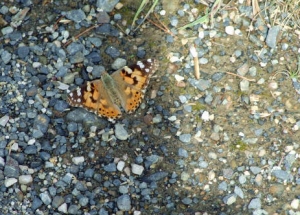
Butterfly, 22 Aug 09.
Now it was just a short walk to another derelict mine, the Cyffty.

The derelict Cyffty mine, 22 Aug 09.
I’m not sure how long a walk it is from Betws y Coed, but the miners who worked here would walk each day from Betws and Llanrwst before a hard days work in this mine. They must have been tired out before they started!
It wasn’t reliable work either. Often it relied on the weather; wet weather could flood the mine and dry spells could mean there was no water to drive the machinery. When they couldn’t work they didn’t get paid, so many of the miners would have small holdings or work on farms too, to help eke out a living.
Downhill now, I set off again. Not too far away is another old lead mine, the Hafna.
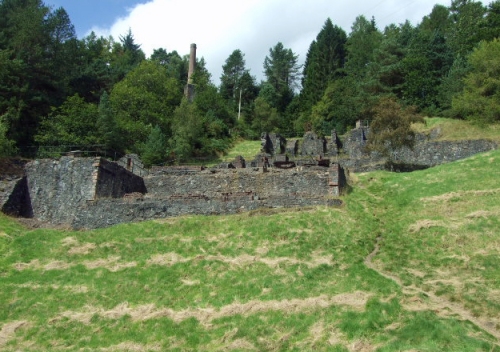
The remains of the Hafna mine, 22 Aug 09.
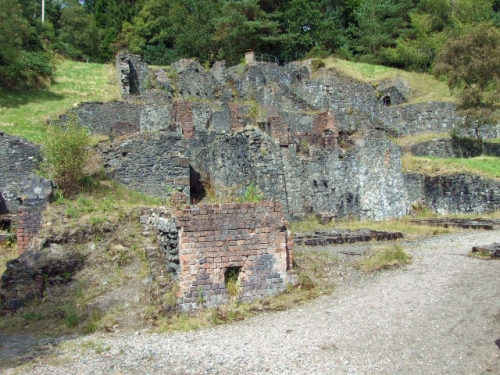
Part of Hafna mine, 22 Aug 09.
After having a look round the remains of the mine I set off again, downhill towards Llanrwst. Before I got back down into the valley though, I took a slight detour to see a lovely little waterfall.
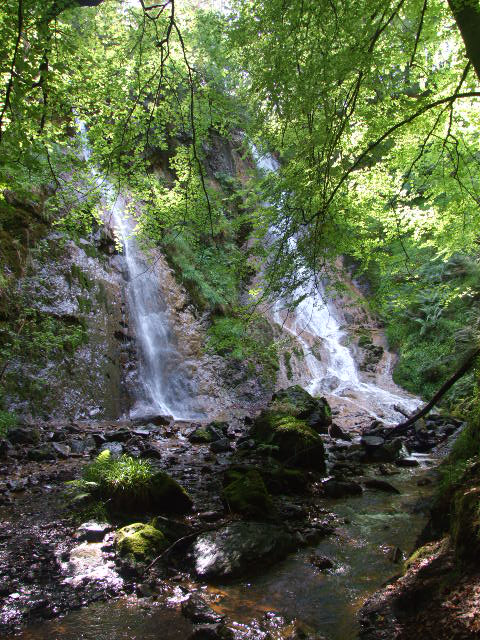
The Grey Mare's Tail, 22 Aug 09.
This is The Grey Mare’s Tail. It is known in Welsh as Rhaeadr y Parc Mawr, but this name is rarely used. The falls are in a lovely wooded glade at Coed Felin Blwm (Lead Mill Wood). It’s well worth making the 200 yard detour to see it, and it lies in a nature reserve so there are other paths to take too.
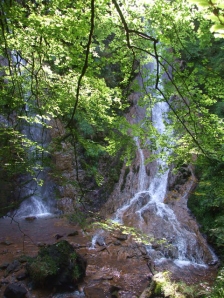
The Grey Mare's Tail, 22 Aug 09.
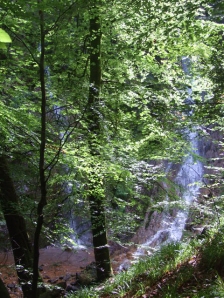
The Grey Mare's Tail, 22 Aug 09.
It’s a steep climb back up to the lane after visiting the falls, but from the top I got a good view of the Conwy valley.
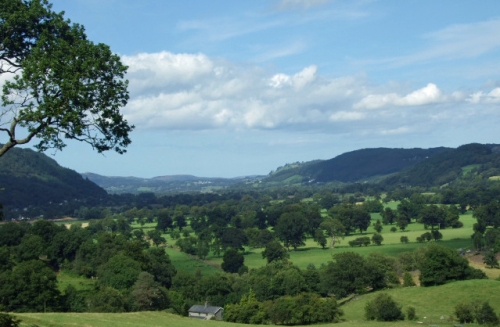
Looking down the lush Conwy valley, 22 Aug 09.
And then it was back to Llanrwst and the sort drive home. It had been a long day and I was glad it would only take a few minutes to get home.
Gwydyr forest is just one more place where there is a lot to explore, I’d only seen a small part today. More information about the activities, trails etc. can be found here: http://www.forestry.gov.uk/gwydyrforestpark
It’s one more place for you to visit; great scenery, history and a labyrinth, what more could you ask for?

